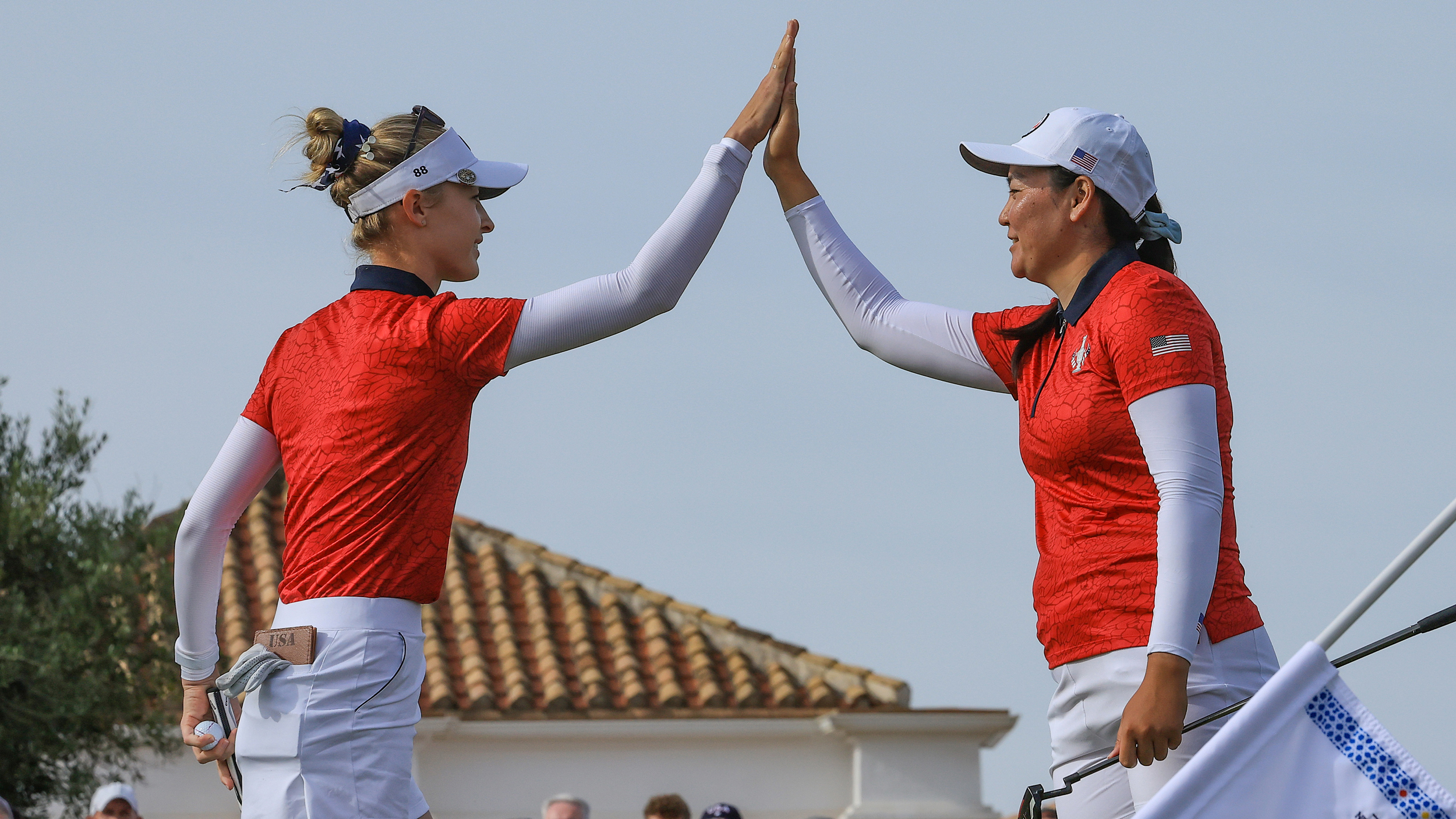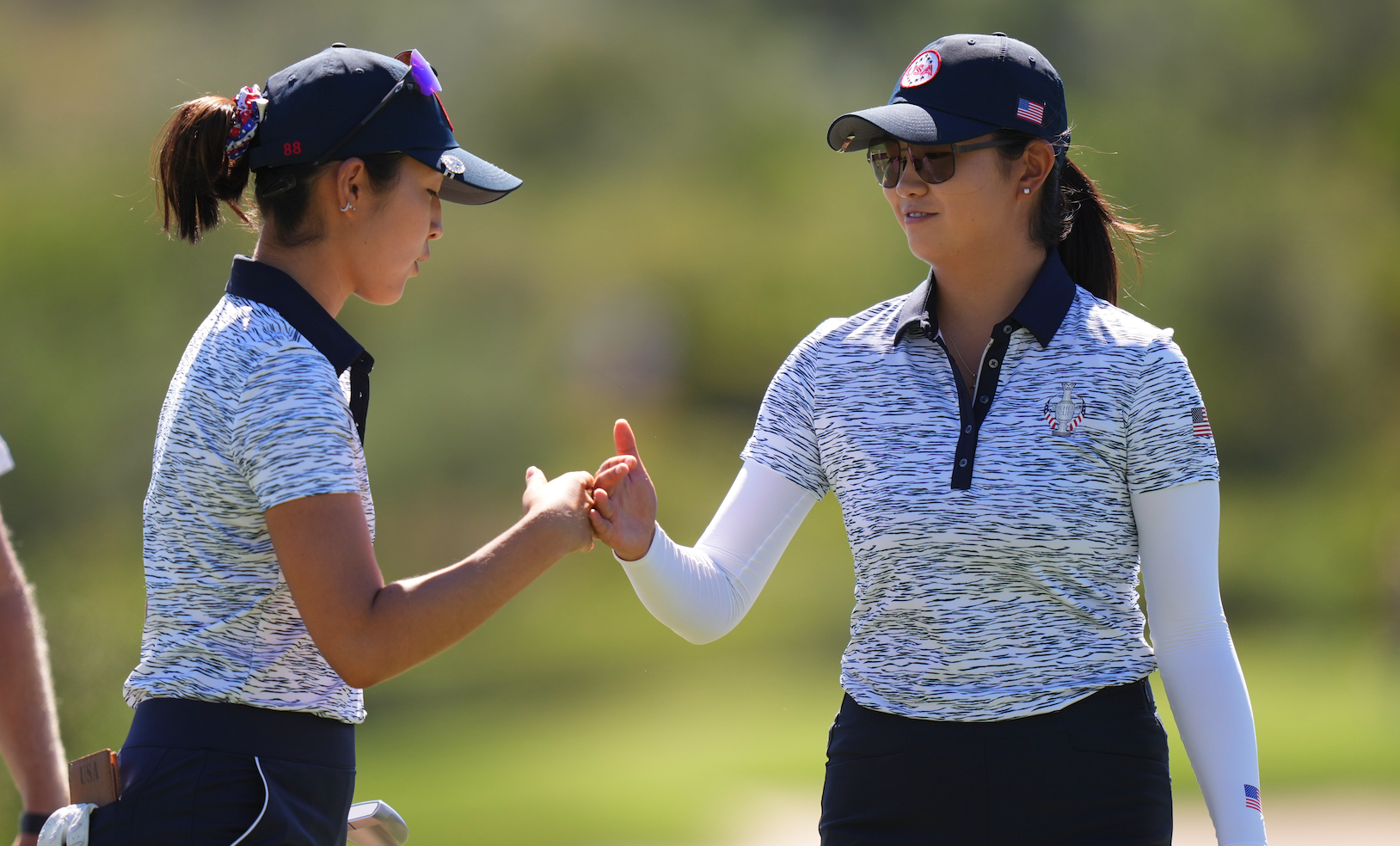
Foursomes and fourballs are a key ingredient to the Solheim and Ryder Cups, with the first two days featuring 16 of these doubles matches.
Both formats involve teams of two players, but the main difference between fourballs and foursomes is in the number of balls being played. In foursomes, team-mates share a ball; in fourballs, each of the four players involved plays their own own ball.
Foursomes is also known as Alternate Shot. In this format a team of two plays one ball, with one of the players teeing off on the odd-numbered holes, and the other doing so on the even-numbered ones. Throughout each hole the team-mates play alternate shots.
A key factor to consider for foursomes players is whose ball is used. Sometimes the pairings play the same ball anyway, while other teams may play balls from different manufacturers with similar characteristics.
It's also common for the foursomes partners to use a different ball on alternate holes, where the player driving off hits their partner's preferred ball so they can hit it into the green and be able to judge the distance, flight and spin better.
Fourballs is also known as Fourball Better Ball. Both the players on a side play their own ball, and the better nett score of the pair on the hole counts as the team score for that hole.
The fourballs format does not require both players in a team to hole out, as only one score will be counted. (Indeed, technically, it does not even require that both members of a team play a hole, although such a scenario is only likely if a player gets injured during the round or turns up late for the start of it.)

Both formats can be used in strokeplay or matchplay, with the Solheim and Ryder Cups being matchplay contests.
In both formats one player can act for the team. In fourballs this means a team-mate can mark his or her partner’s ball, or lift and clean, or drop it under penalty. (If these are done incorrectly, it is the player whose ball it is who incurs any penalty not the player who performed the action.)
Similarly a player and his caddie may also help the other player in the same way that the player's own caddie would be allowed to do.
In fourballs, partners may also play in whichever order the team elects when is one of their members’ turn to play.
Thus if Andrew and Benji are a fourball team, and it would normally be Benji’s turn to play as his ball is the furthest from the hole, the team can chose that Andrew plays before Benji, if they so wish.
In foursomes a team's handicap is 50% of the aggregated course handicaps of the team-mates.
In fourballs each player gets 90% of their course handicap. But that aspect is not something that Solheim Cup and Ryder Cup players have to worry about.
Foursomes vs fourballs - what you need to know
- Foursomes: One ball, alternate shot
- Foursomes: One player tees off odd-numbered holes, one goes off even-numbered holes
- Foursomes: 50% of combined handicap
- Foursomes: Quicker format as only two balls in play
- Fourballs: Each player plays their own ball
- Fourballs: Each player gets 90% handicap







